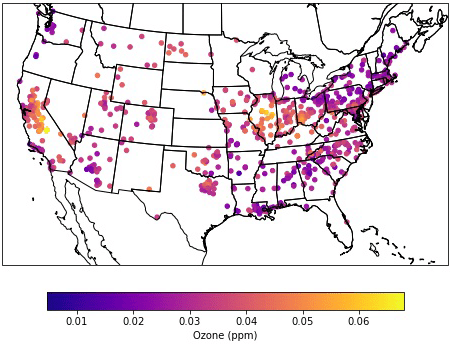Python is a programming language that is easy to learn and is capable of complex, rigorous computations. It is becoming the popular coding language for scientific researchers in many disciplines. However, finding discipline-specific tutorials and examples can still be difficult. Therefore, we have developed accessible tutorials to help researchers in the atmospheric and geophysical sciences learn Python.

These tutorials are designed for undergraduate and graduate students with no or minimal prior coding experience. They do not assume any knowledge about computer programming or coding, but they are targeted toward students with an interest in air quality and the atmospheric sciences.
Through these tutorials, you will learn to:
- Read, write, and understand Python syntax
- Handle multiple file formats including csv, Excel, and netCDF
- Visualize data in different ways
Each tutorial contains a Python notebook file and supporting documents such as text or csv files.
Development Team
- Developers: Alicia Hoffman, Gesangyangji (Gesang)
- Group lead: Tracey Holloway
- Student contributors: Lizzy Kysela, Sophie Abou-Rizk, Stephanie (Steph) Elkins, Sunjoo Hwang, Eliot Kim, Claire Naughton, Jennifer McGinnis, and Emily Tupper
Have Questions or Feedback?
Email us at abhoffman3@wisc.edu
Accessing the Tutorials
Free registration is required to download the tutorials. After completing the form, you’ll receive a link. We may also send you occasional emails about updates and additions.